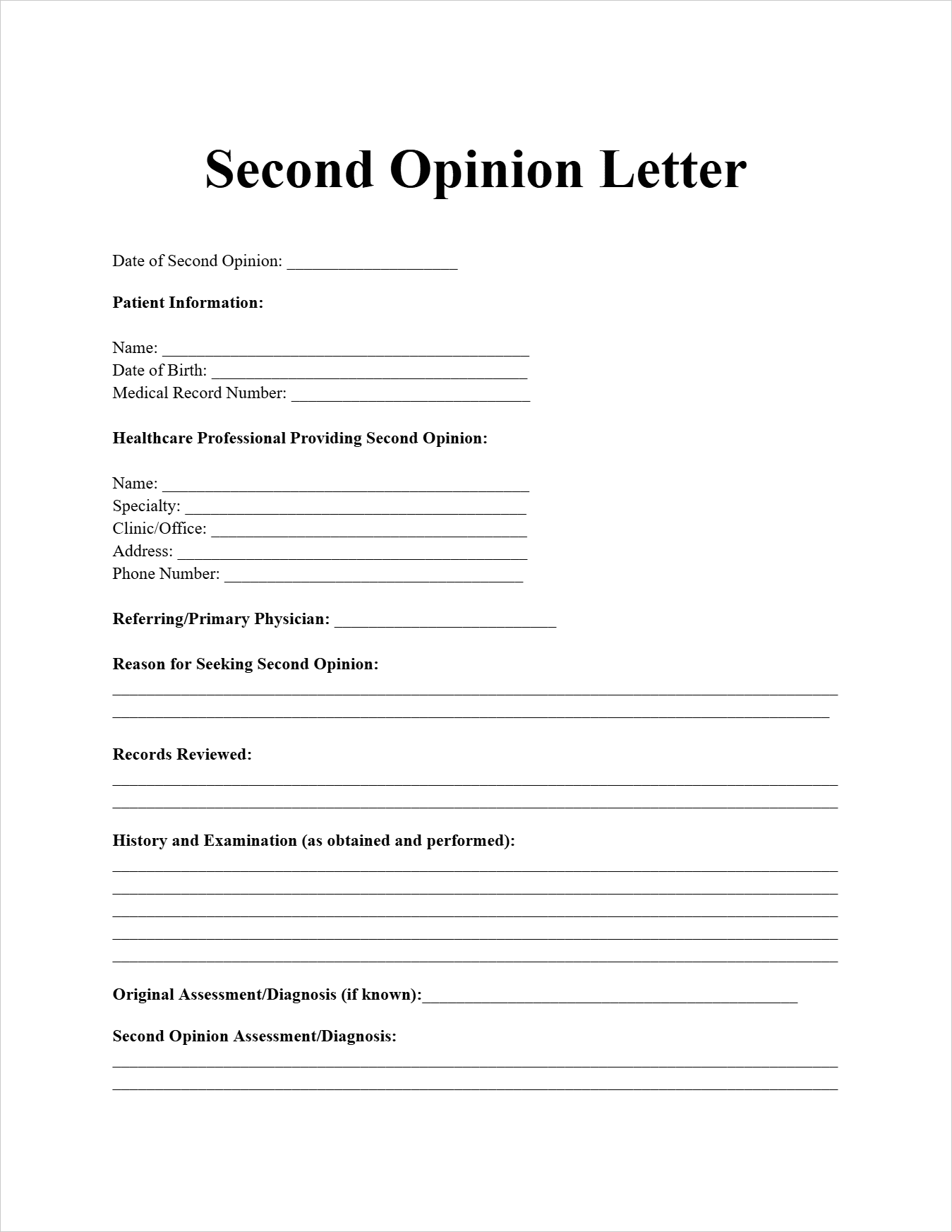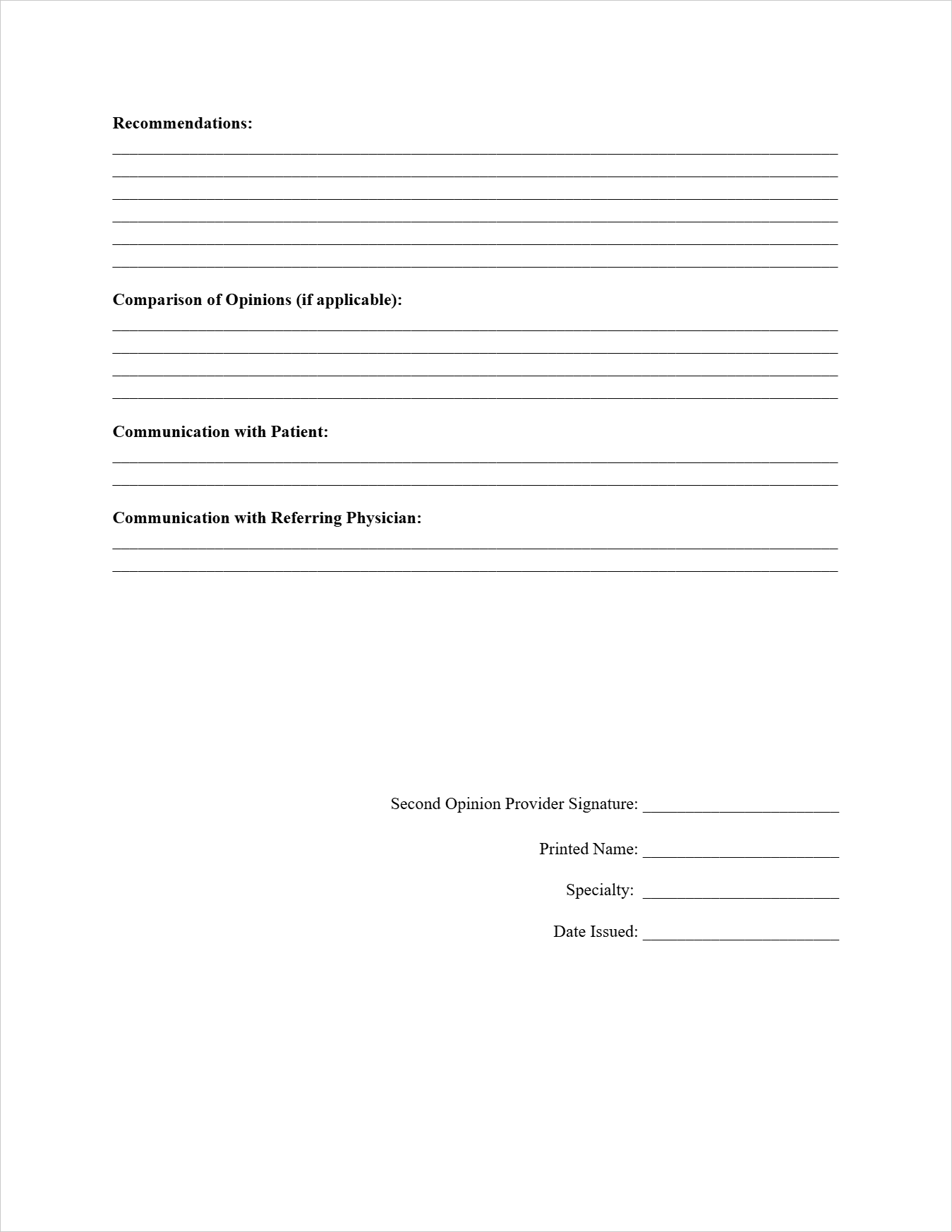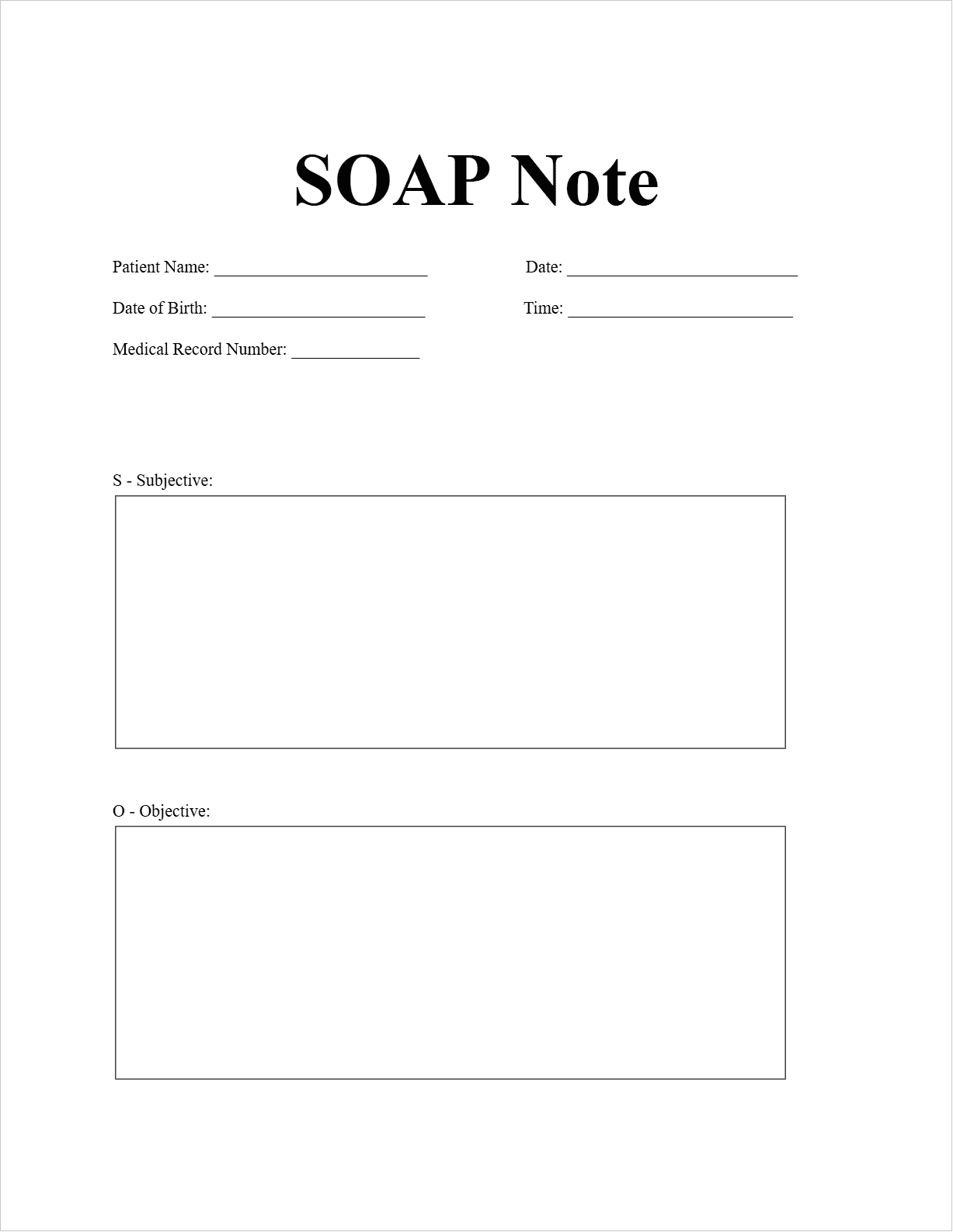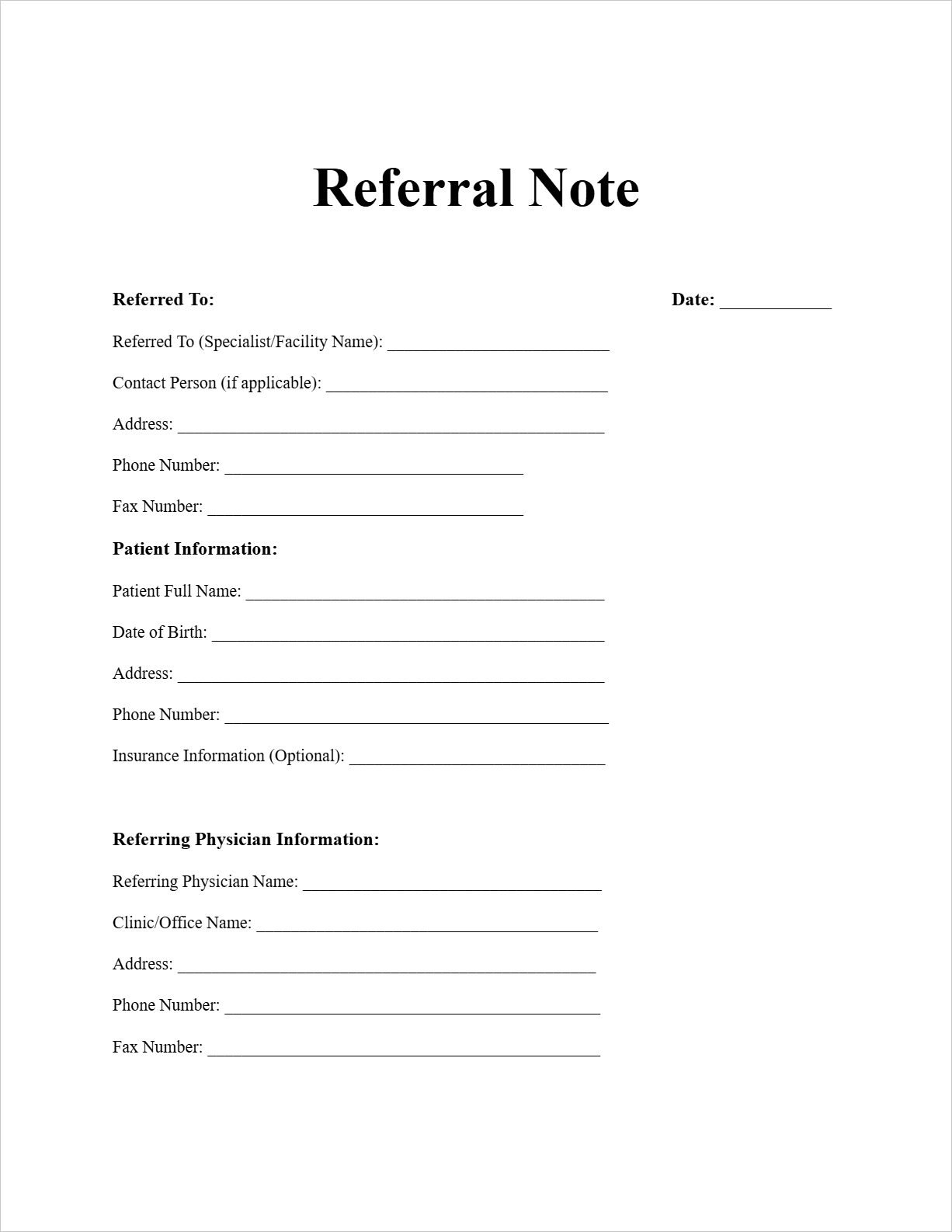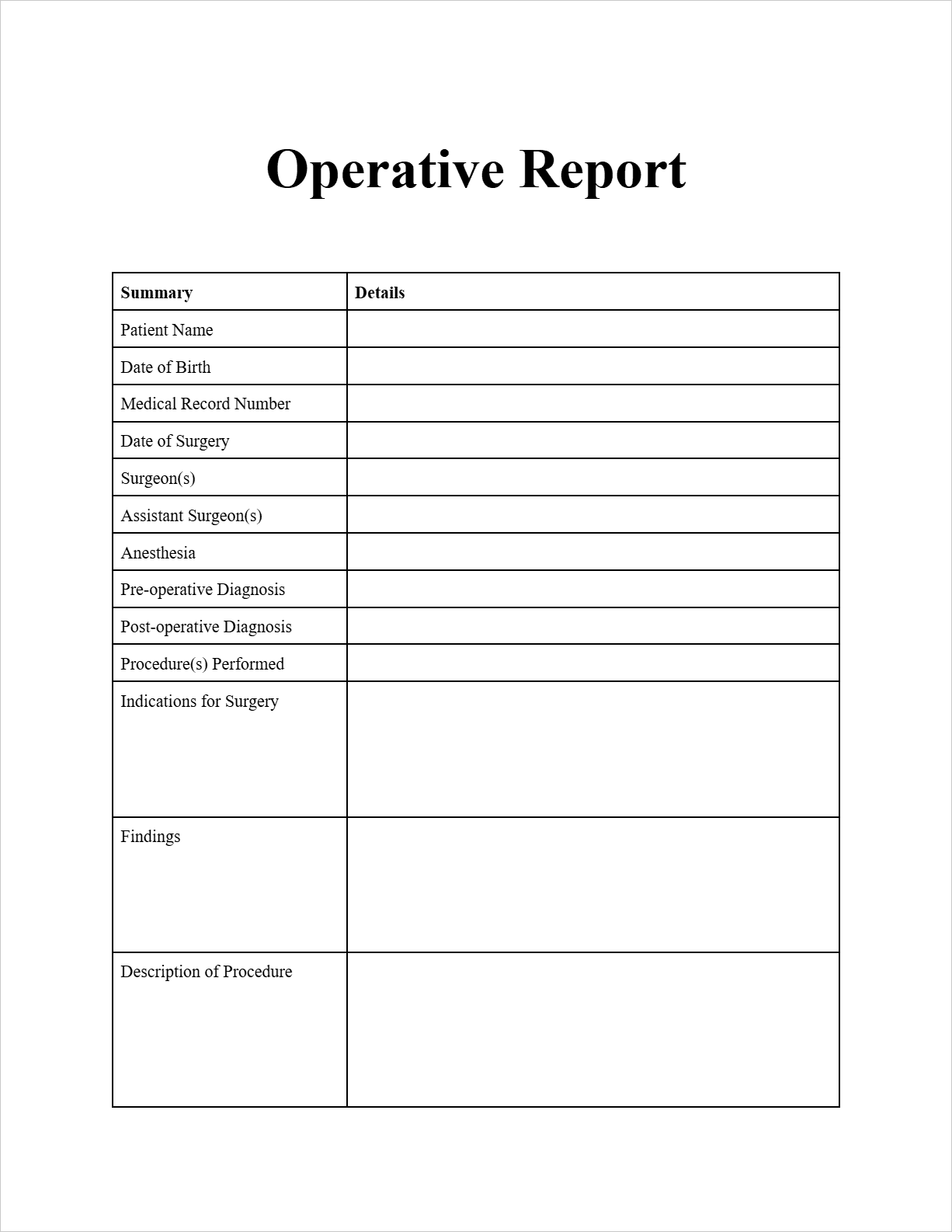Seeking a second opinion on a medical condition or treatment plan is a common and often valuable practice in healthcare. It allows patients to gain a different perspective, clarify their understanding, and make more informed decisions about their health. A Second Opinion Letter serves as the formal documentation of this consultation, outlining the expert's independent assessment and recommendations. This article will explore the importance and key elements of a Second Opinion Letter, providing a practical example using our template.
What are Second Opinion Letters or Second Opinion Notes?
A Second Opinion Letter, sometimes also referred to as a Second Opinion Note, is a medical document prepared by a healthcare professional who has been consulted to provide an independent assessment of a patient's medical condition and the recommendations of another healthcare provider. Typically, the patient or their primary physician initiates the request for a second opinion. The letter outlines the second healthcare professional's findings based on a review of the patient's medical records, a physical examination (if performed), and their expert medical judgment. The primary goal is to provide the patient and their original healthcare team with an alternative perspective that can aid in making well-considered treatment decisions.
Second Opinion Letter Example
Imagine Margaret Chen, who was initially diagnosed with migraines, sought a second opinion from Dr. Eleanor Ramirez, a neurologist. Here’s how Dr. Ramirez documented her assessment and recommendations:
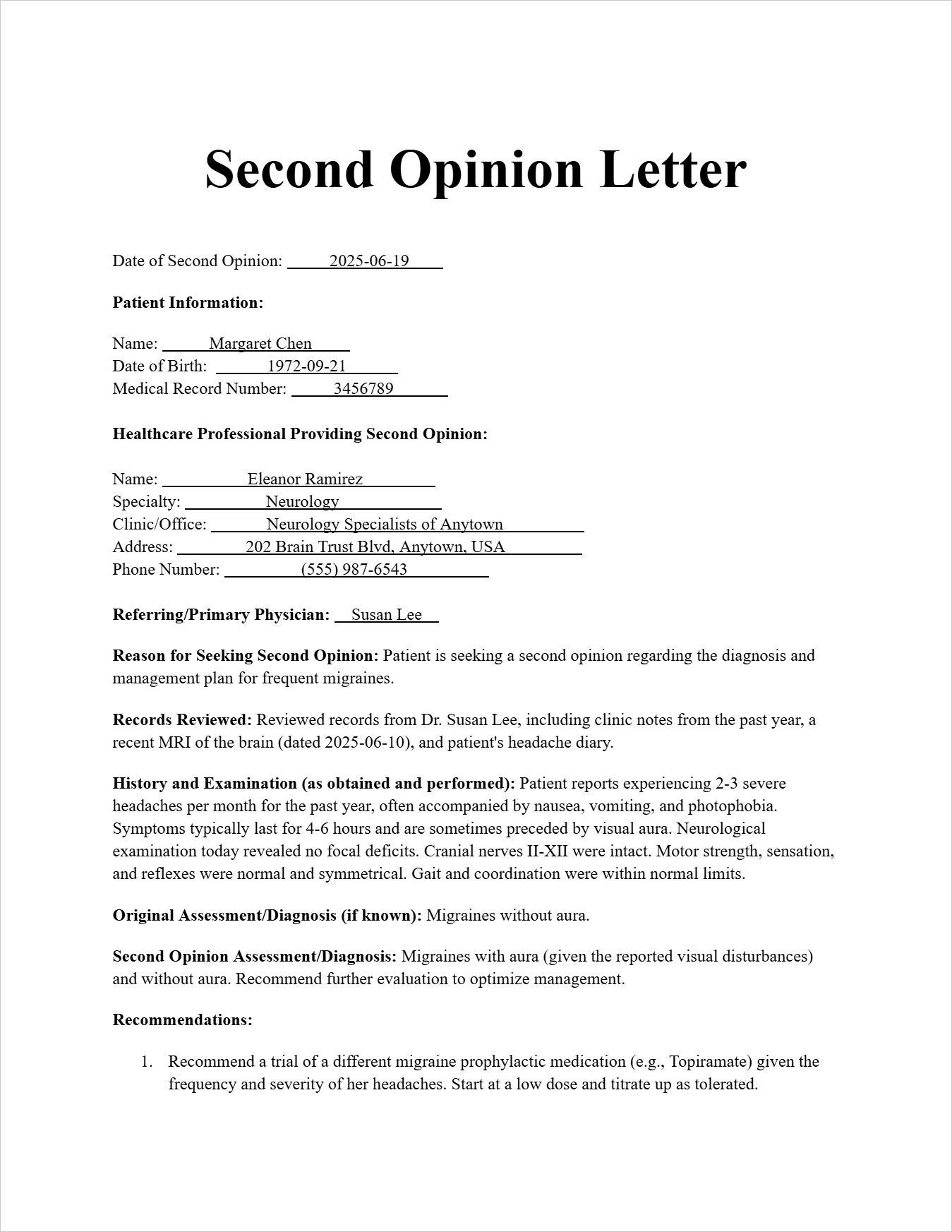
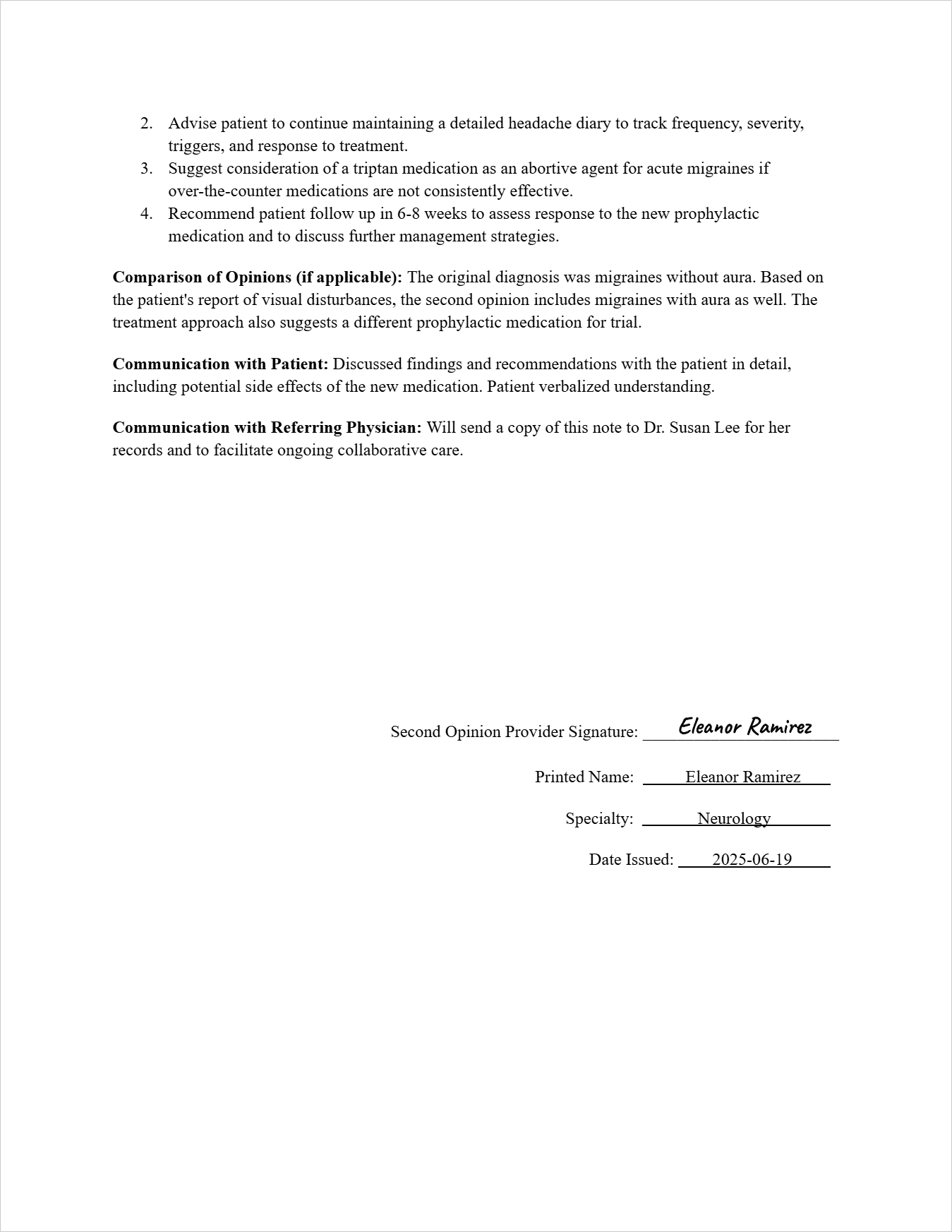
Second Opinion Letter
Patient Information:
Patient Name: Margaret Chen
Date of Birth: 1972-09-21
Medical Record Number: 3456789
Date of Second Opinion: 2025-06-19
Healthcare Professional Providing Second Opinion:
Name: Eleanor Ramirez
Specialty: Neurology
Clinic/Office: Neurology Specialists of Anytown
Address: 202 Brain Trust Blvd, Anytown, USA
Phone Number: (555) 987-6543
Referring/Primary Physician Information:
Name: Susan Lee
Reason for Seeking Second Opinion: Patient is seeking a second opinion regarding the diagnosis and management plan for frequent migraines.
Records Reviewed: Reviewed records from Dr. Susan Lee, including clinic notes from the past year, a recent MRI of the brain (dated 2025-06-10), and patient's headache diary.
History and Examination (as obtained and performed): Patient reports experiencing 2-3 severe headaches per month for the past year, often accompanied by nausea, vomiting, and photophobia. Symptoms typically last for 4-6 hours and are sometimes preceded by visual aura. Neurological examination today revealed no focal deficits. Cranial nerves II-XII were intact. Motor strength, sensation, and reflexes were normal and symmetrical. Gait and coordination were within normal limits.
Original Assessment/Diagnosis (if known): Migraines without aura.
Second Opinion Assessment/Diagnosis: Migraines with aura (given the reported visual disturbances) and without aura. Recommend further evaluation to optimize management.
Recommendations:
- Recommend a trial of a different migraine prophylactic medication (e.g., Topiramate) given the frequency and severity of her headaches. Start at a low dose and titrate up as tolerated.
- Advise patient to continue maintaining a detailed headache diary to track frequency, severity, triggers, and response to treatment.
- Suggest consideration of a triptan medication as an abortive agent for acute migraines if over-the-counter medications are not consistently effective.
- Recommend patient follow up in 6-8 weeks to assess response to the new prophylactic medication and to discuss further management strategies.
Comparison of Opinions (if applicable): The original diagnosis was migraines without aura. Based on the patient's report of visual disturbances, the second opinion includes migraines with aura as well. The treatment approach also suggests a different prophylactic medication for trial.
Communication with Patient: Discussed findings and recommendations with the patient in detail, including potential side effects of the new medication. Patient verbalized understanding.
Communication with Referring Physician: Will send a copy of this note to Dr. Susan Lee for her records and to facilitate ongoing collaborative care.
Second Opinion Provider Signature: (Imagine a signature is drawn here)
Printed Name: Eleanor Ramirez
Specialty: Neurology
Date: 2025-06-19
FAQs about the Second Opinion Letter Template
Who typically requests a second opinion?
A patient may request a second opinion themselves, or their primary healthcare provider might recommend or facilitate it.
What information should be included in a Second Opinion Letter?
Key elements include the patient's information, the second opinion provider's details, the reason for seeking the opinion, a review of relevant medical records, findings from the consultation, the original assessment (if known), the second opinion assessment, specific recommendations, and any communication with the patient and the referring physician.
How does a Second Opinion Letter differ from a regular consultation note?
While both involve one healthcare provider seeking input from another, a second opinion specifically implies an independent assessment of a pre-existing diagnosis or treatment plan. A regular consultation might be for general advice or co-management.
Why is seeking a second opinion important?
It can provide patients with more information, different perspectives, and potentially alternative treatment options, empowering them to make more informed decisions about their healthcare.
How should a patient obtain a second opinion and the corresponding letter?
Patients should discuss their desire for a second opinion with their primary physician, who can often facilitate a referral. The second opinion provider will then generate the Second Opinion Letter.
Free Download: Printable Second Opinion Letter Template
You can download the Second Opinion Letter Template mentioned above by clicking Use Template button on this page. Customize it to fit your specific needs and preferences.


